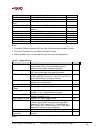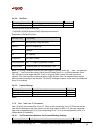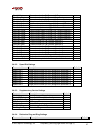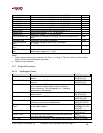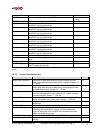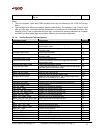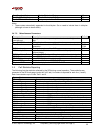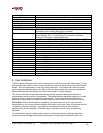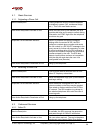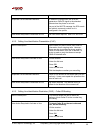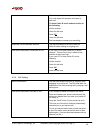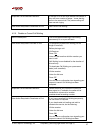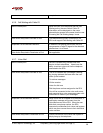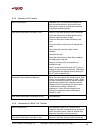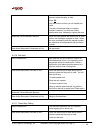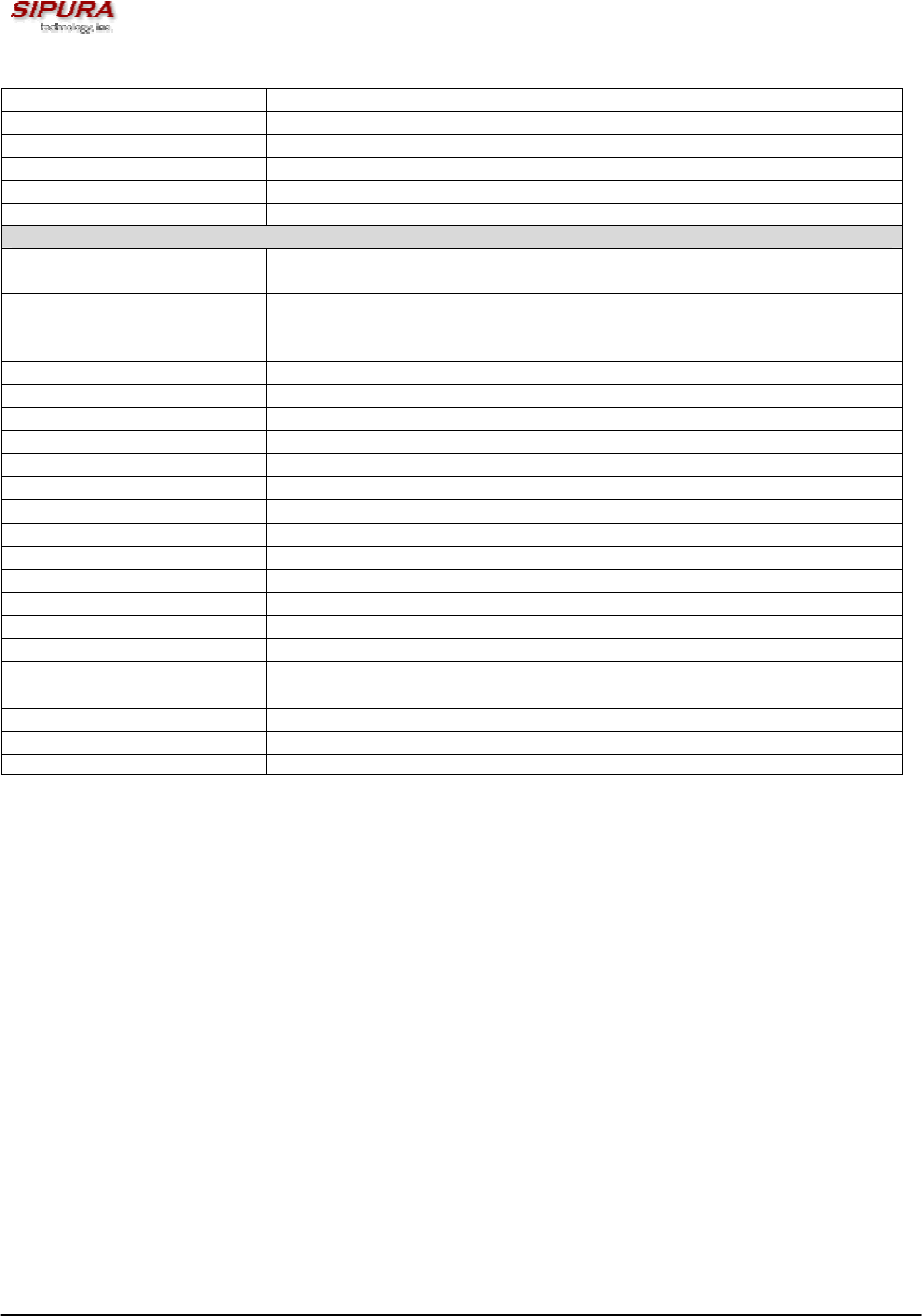
© 2003 Sipura Technology, Inc Proprietary (See Copyright Notice on Page 2)
33
Next Registration In Number of seconds before the next registration renewal
Message Waiting Indicate whether new voice mails available: Yes or No
Call Back Active Indicate whether a call back request is in progress: Yes or No
Last Called Number The last number called
Last Caller Number The number of the last caller
Mapped SIP Port NAT Mapped SIP Port
Call 1/2 Status
State State of the call: Idle, Dialing, Calling, Proceeding, Ringing, Answering,
Connected, Hold, Holding, Resuming, or Reorder
Tone Tone playing for this call: Dial, 2
nd
Dial, Outside Dial, Ring Back, Ring,
Busy, Reorder, SIT1– 4, Call Waiting, Call Forward, Conference,
Prompt, Confirmation, or Message-Waiting
Encoder Encoder in use: G711u, G711a, G726-16/24/32/40, G729a, or G729ab
Decoder Decoder in use: G711u, G711a, G726-16/24/32/40, G729a, or G729ab
FAX Indicate whether FAX pass-through mode has been initiated: Yes or No
Type Indicate the call type: Inbound or Outbound
Remote Hold Indicate whether the remote end has placed the call on hold: Yes or No
Call Back Indicate whether the call is triggered by a call back request: Yes or No
Peer Name Name of the peer
Peer Phone Phone number of the peer
Duration Duration of the call in hr/min/sec format
Packets Sent Number of RTP packets sent
Packets Recv Number of RTP packets received
Bytes Sent Number of RTP bytes sent
Bytes Recv Number of RTP bytes received
Decode Latency Decoder latency in milliseconds
Jitter Receiver jitter in milliseconds
Frames Lost Total number of frames lost in milliseconds
Packet Error Number of RTP packets received that are invalid
Mapped RTP Port NAT mapped RTP port
4. User Guidelines
The SPA can be configured to the custom requirements of the service provider Administrator, so that
from the subscriber’s point of view, the service behaves exactly as the service provider Administrator
wishes – with varying degrees of control left with the end user. This means that a service provider
can leverage the programmability of the SPA to offer sometimes subtle yet continually valuable and
differentiated services optimized for the network environment or target market(s).
This section of the User Guide, describes how some of the supported basic and enhanced, or
supplementary services could be implemented. The implementations described below by no means
are the only way to achieve the desired service behavior. The specific feature activation and
deactivation codes used in the below examples match the factory default values of the SPA-2000.
Please Note: Refer to documentation provided by your service provider for the most accurate
representation to the current service availability and access code values. Many of the below services
– especially “enhanced services” – are subject to interoperation with the service provider’s
application/call server capabilities. Therefore some of the below services may not behave as
described.
To understand the specific implementation options of the below features, including parameters,
requirements and contingencies please refer the section Configuration Parameters, section 3.4.



